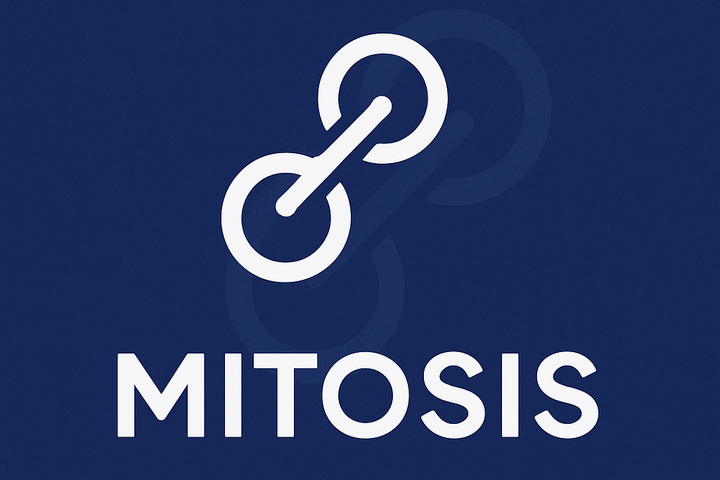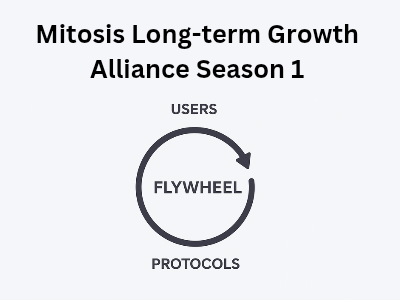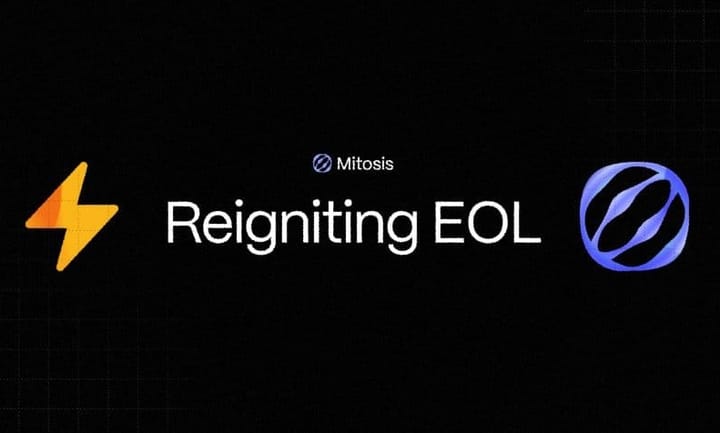Mitosis’ Matrix Straddle Vault: Pioneering Multi-Reward Liquidity in DeFi

Introduction
Decentralized Finance (DeFi) is a realm of relentless innovation, where liquidity providers (LPs) seek not just yield but flexibility and choice. Mitosis, a Layer 1 blockchain protocol, is redefining this landscape with its Matrix Straddle Vault, a flagship feature of its Ecosystem-Owned Liquidity (EOL) model. On April 29, 2025, Mitosis launched the vault’s fourth and final phase, opening it to all users with no deposit cap or eligibility barriers, offering simultaneous MITO Points and Theo token rewards. This article delves into the Matrix Straddle Vault’s mechanics, its multi-reward structure, and its potential to reshape liquidity provision in DeFi’s multi-chain era.
The Evolution of Liquidity in DeFi
Liquidity provision in DeFi often feels like a trade-off. LPs lock assets in pools for fees or tokens, sacrificing flexibility and exposure to diverse rewards. As DeFi’s total value locked (TVL) surpasses $100 billion in 2025, with over 50% spread beyond Ethereum, the demand for dynamic, cross-chain solutions has surged. Mitosis addresses this with EOL, a model that empowers LPs to govern and optimize liquidity collectively. The Matrix Straddle Vault, a key pillar, takes this further by blending accessibility with multi-layered incentives, as demonstrated in its latest phase.
Mechanics of the Matrix Straddle Vault
The Matrix Straddle Vault is a cornerstone of Mitosis’ yield-curation platform, Matrix, designed to maximize LP returns through structured campaigns. Here’s how it operates:
▪️ Open Access: Phase 4, launched at 4 PM UTC on April 29, 2025, removed all deposit caps and eligibility criteria, inviting universal participation. LPs can deposit assets like weETH (wrapped Ether.fi ETH) into the vault, receiving “maAssets” that accrue value and remain usable.
▪️ Dual Rewards: Depositors earn MITO Points, tied to the upcoming $MITO token for governance, alongside Theo tokens, rewards from a partnered protocol. This multi-reward system amplifies returns without requiring separate stakes.
▪️ Cross-Chain Integration: Built on Mitosis’ cross-chain infrastructure, the vault enables assets to flow across networks like Ethereum and Arbitrum, tapping into diverse yield sources while maintaining Ethereum-level security via EigenLayer.
Tested during the 2024 Expedition Testnet, the vault’s mechanics proved robust, with thousands engaging in similar campaigns. The final phase’s inclusivity underscores Mitosis’ commitment to democratizing DeFi.
Benefits for Liquidity Providers
The Matrix Straddle Vault offers LPs a compelling value proposition:
▪️ Accessibility: No entry barriers ensure both retail and institutional LPs can participate, leveling the playing field in a space often dominated by whales.
▪️ Diversified Returns: Earning MITO Points and Theo tokens simultaneously boosts yield potential, appealing to LPs seeking layered incentives. X users have lauded this as “double-dipping done right” (sentiment from).
▪️ Governance Power: MITO Points foreshadow $MITO’s role in EOL governance, letting LPs influence liquidity allocation, from yield strategies to cross-chain deployments.
Mitosis’ $7 million seed round, backed by Amber Group and Foresight Ventures, fuels this infrastructure, while partnerships with Ethos (security) and Routescan (transparency) enhance trust.
Impact on DeFi’s Landscape
The Matrix Straddle Vault is more than a product, it’s a signal of DeFi’s next phase:
▪️Inclusivity: By removing caps, Mitosis counters DeFi’s trend toward institutional bias, fostering a community-driven ecosystem.
▪️ Multi-Reward Innovation: Dual-token rewards set a precedent for protocols to stack incentives, potentially increasing LP retention and TVL, which Mitosis already grew to $80 million in three months.
▪️ Cross-Chain Scalability: The vault’s integration with chains like Arbitrum aligns with DeFi’s multi-chain shift, addressing fragmentation and boosting liquidity efficiency.
This model could inspire competitors to rethink liquidity, especially as modular blockchains like Celestia gain traction.
Challenges to Address
No DeFi innovation is risk-free. The vault’s smart contracts, while audited, face hack risks, DeFi lost $1 billion to exploits in 2024. Theo token integration introduces dependency on external protocols, which could falter in volatile markets. Some X users noted past reward distribution delays, suggesting operational hiccups (sentiment from). Mitosis mitigates these with rigorous testing, as seen in the testnet, and community feedback loops to refine processes.
A New Liquidity Frontier
The Matrix Straddle Vault’s final phase marks a milestone for Mitosis, blending accessibility, multi-reward incentives, and cross-chain fluidity. As the mainnet looms, with $MITO governance set to empower LPs further, Mitosis is crafting a DeFi ecosystem where liquidity isn’t just provided, it’s reimagined. The vault’s open-door policy and dual rewards reflect a broader mission, that is, to make DeFi inclusive and efficient.
For LPs, the Matrix Straddle Vault offers a chance to earn diverse rewards while shaping liquidity’s future. For DeFi, it’s a bold step toward a multi-chain, community-owned era. As Mitosis builds on its $80 million TVL and robust partnerships, the vault stands as a beacon of what’s possible when LPs hold the keys. In a $100 billion market, that’s a revolution worth joining.
Get more updates on Mitosis ecosystem by checking out their official pages at: Website | X | Discord | Telegram



Comments ()